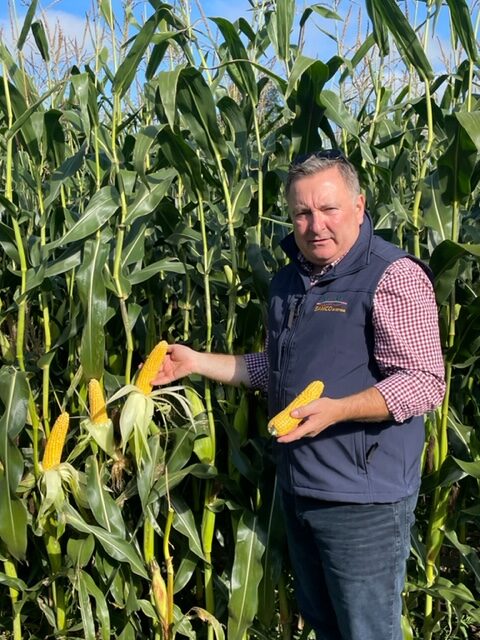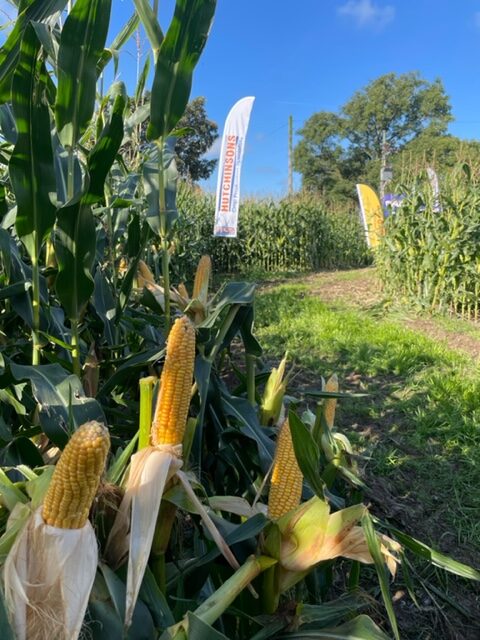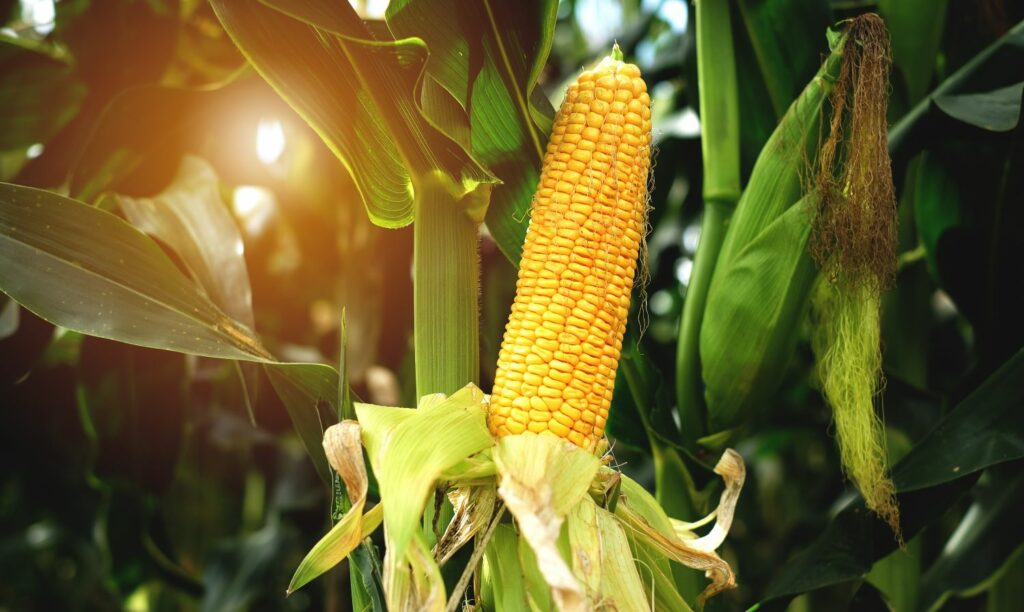Hutchinsons maize trials focus on maximising crop production in the north west
30th September 2022
The 2022 Hutchinsons maize trials in Cumbria offered growers and contractors insight into new ways of maximising maize output in the less than favourable growing conditions of the north west.
The Carlisle Maize Regional Technology Centre at Smalmstown Farm welcomed over 60 farmers and contractors eager to learn about new ways of boosting the performance of maize crops. Hosted by Mr and Mrs R Fisher on 16th September, the trials showcased the latest maize varieties and growing techniques for crops grown under film and on open ground alike.
According to Hutchinsons agronomist Jim Clark, growing conditions are often less conductive to warm-season crops in the northwestern regions of the country, creating additional challenges for growers.
“Up here, many growers establish maize under film to mitigate some of the early season risks from cooler temperatures in spring,” Mr Clark explained, “but the technique creates its own challenges and requires considerable investment, so maximising crop output is vital to secure the future of maize growing in such areas.”
Over 17 varieties featured at the trials
Visitors to the Carlisle trials had the opportunity to examine a range of maize varieties, with crops on display ranging from early to late maturities.
Companies showcasing the latest under film varieties included Corteva, Germinal, Limagrain, Bayer, Elsoms, and RAGT, while the latest open plot varieties were from Pioneer, Limagrain, and RAGT.
Hutchinsons’ biggest variety at the trials was P7034 from Corteva (Pioneer), according to Mr Clark.
“It is a consistently good all-rounder and has the dent-type grain that has been bred specifically for the cooler maritime locations found here in the UK. It also delivers a good fresh and dry weight yield with high starch levels that are more rumen-degradable and allow shorter clamp to feeding time.”
Mr Clark mentioned a further three varieties that stood out at the trials. P7179 from Corteva is a new early variety for growing under film or in the open that is currently in use in Europe and will be available in Britain next year. Meanwhile, Bayer’s DKC 3218 shows promise as an early driller and produces big cobs that are quick to mature.
An alternative to the above is the variety Cardif from Germinal, which is also early to mature and produces big plants with good cobs. Mr Clark says Cardif has always been a top performer at the Carlisle trials and is exclusive to Hutchinsons.

Hutchinsons agronomist Jim Clark at the Carlisle maize trials.
As the demand for maize seed in the UK continues at an all-time high, growers are advised to place their orders early this year to avoid shortages. Challenges in seed production and logistics are also likely to contribute to tight seed supplies looking ahead.
New Samco Bio film raises interest
The Carlisle maize trials this year featured crops growing under a new narrow-row version of a 100% starch-based film, Samco Bio, which was of particular interest to visitors. While the film is being used across Europe, it costs 20% more than conventional wide row film, limiting its appeal to UK growers.
However, Mr Clark observed the maize plants liked growing under this film, and pointed out the value in knowing how the crops performed underneath it.
“If we were to find ourselves where starch-based films become standard as is the case in Europe, at least we are one step ahead and have tried and tested it in advance and will continue to test new growing techniques.”
Starter fertilisers continue to show benefit
This year’s trials were the third in a row to feature plots of P7034 drilled with starter fertilisers on 10th April under Samco Oxo Bio film. The event compared the effects of Biolite and ammonium phosphate-based Primary-P fertilisers on crop development and yield.
Mr Clark said this year’s results were so far similar to last year, when treated maize established much quicker achieved a bigger size than control crops.
“Starter fertilisers could also negate the risk of root scorch occurring when granular fertiliser is applied ‘down the spout’ and sits too close to the seed. It is a particular risk in rough, dry seedbeds where fertiliser does not dissolve, so scorches developing roots,” Mr Clark added.
“We are also seeing really positive results with crops maturing as much as a week early, where late applications of liquid release nitrogen Ndurance, is applied at the 8-10 leaf stage usually about the end of June/beginning of July which has become common practice on most maize grown in Cumbria and SW Scotland.”

Maize cobs at the 2022 Hutchinsons maize trials in Cumbria.
Undersowing maize with grass increasingly popular
Lastly, the trials also featured discussions on undersowing maize with grass to reduce erosion and increase soil health. They revealed that more and more farmers are using the technique to cover bare soils over the winter and make use of the additional grazing it provides.
Encouraging farmers to explore the option, Mr Clark offered his top tips for undersowing success:
- Farmers undersowing for grazing should use the Westerwold Italian ryegrass mix at 6-9 kg/acre eight weeks after drilling
- Farmers undersowing to prevent erosion and reap soil health benefits should use fescue or amenity grasses as they have good deep and shallow surface rooting. A seed rate of 4 kg/acre is sufficient
- Always drill into moisture
- Broadcasting and drilling are both effective, as long as there is sufficient moisture
- Farmers should consider the long-term impact of sulfonylurea herbicides, which could severely affect grass establishment. If applied too close to the emerging crop, there can be an impact on the plant. The risks are particularly high if the soil is dry at application and receives rain later on, as the moisture activates the residual.

